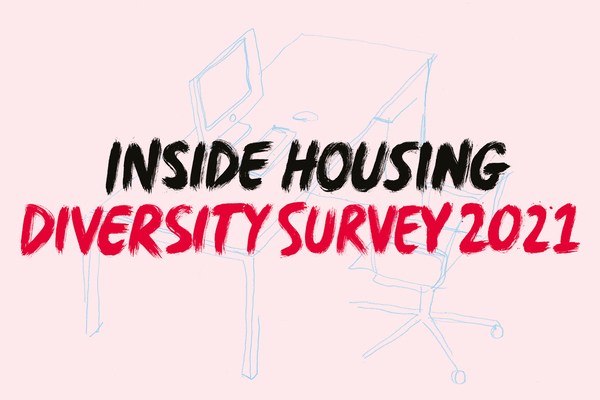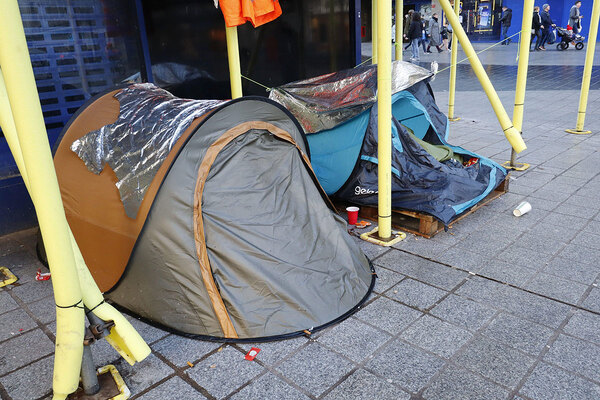You are viewing 1 of your 1 free articles
Stubborn shortcomings and big data gaps: what new NHF analysis says about diversity in the housing workforce
Recognition of social landlords’ shortcomings around the representation of women and people from ethnic minorities in top-level jobs has been growing. Alex Turner reports on new data from the National Housing Federation that shows housing associations have other pressing issues to address around workforce diversity
Barely a month has passed since Inside Housing published the results of our revamped survey examining diversity among top-tier leaders in the housing sector.
The study made worrying findings, including that 61% of respondent housing associations did not have one person who is Black or from an ethnic minority in their top team.
It also highlighted how the needle is failing to move on gender inequality at housing’s top tables, with women accounting for only a little over four in 10 positions in executive teams and on boards – a proportion that has barely changed in five years.
“The recommendations accompanying the results are really practical ways in which the sector can build on work already under way”
Analysis out this week from the National Housing Federation (NHF) underscores those findings, and adds context to others, perhaps most notably around the low levels of disabled people working in housing.
The new research, which 174 organisations contributed to, is based on a free data tool developed by the NHF. It enables landlords to compare how representative their entire workforce is to population by stock location and allows for comparison of representation of executives and boards to staff, and customers to workforce.
Arguably just as important as the solid facts and figures provided by the exercise are the gaps in knowledge it has exposed – something our survey also uncovered. For instance around employees’ socio-economic background and gender identity. The NHF recommends these gaps be filled – and identified inequalities addressed – through a mixture of direct engagement with staff, boards and others and regular data collection, which can then be used to drive concrete action.
“When proportionately more disabled people live in housing association homes, we should be becoming a sector of choice for people [to work in], and there are so many insights that disabled people can share around housing”
“The recommendations accompanying the results are really practical ways in which the sector can build on work already under way,” says Geeta Nanda, chair of the G15 group and chief executive of Metropolitan Thames Valley Housing. “Data is critical in understanding [challenges around diversity], so I welcome the focus given to the need to collect and interrogate information at all levels of our organisations.”
Disabled people ‘under-represented and under-reported’
One striking finding from the NHF’s data was that representation of disabled people across staff, executive and board members (8% for each category) is only a third of the corresponding population by stock location (24%). The NHF recommends all landlords should “seek to improve representation at all levels” – particularly as there are proportionately more disabled people living in social homes than any other housing tenure.
“This is a structural issue – the unemployment rate for disabled people is twice that of non-disabled people – but that doesn’t mean it’s one we shouldn’t do anything about,” says Bekah Ryder, senior researcher at the NHF who worked on the new study. “When proportionately more disabled people live in housing association homes, we should be becoming a sector of choice for people, and there are so many insights that disabled people can share around housing [such as around accessibility].
“There are also new opportunities created by [the shift to] working from home – I think we can really make inroads and this is an area where we need to think carefully about next steps,” she adds.
But the study also found that for 30% of the housing association workforce, disability was a characteristic for which employers had no data, suggesting that the true numbers of people with a disability (as defined by the Equality Act 2010) are underreported.
“We know – from the number of adjustments we make, and the amount of support we give – that we have more people with disabilities in our organisation than represent themselves as disabled,” says Cym D’Souza, chief executive of Manchester’s Arawak Walton. “There is a stigma involved in admitting you have a disability – some people will prefer not to say – and you need to keep asking the question.”
The NHF’s report urges the same approach, noting that – unlike many other protected characteristics – disability is one that can change over time and therefore demonstrates the importance of regularly collecting and updating employee data.
It also recommends housing associations work, including with external agencies, to identify potential barriers for disabled people in the workplace, including reviewing recruitment processes and practices.
‘We need to ask: are we institutionally racist?’
If the NHF’s findings on disability seem to offer fresh ways in which the sector can improve an inadequate situation, those on race and ethnicity have a depressing feel of stasis.
Housing’s workforce as a whole offers a reasonable representation of the population in areas where landlords’ stock is – albeit with the important caveat that, in common with social lettings, Asian and Asian-British people are under-represented.
But while associations’ non-executive staff is just under 81% white – compared with 83% of the population – among senior leaders the figure is 90%.
It is a grimly familiar picture that – as we reported last year – has led some talented Black and ethnic minority staff to leave the sector. Several senior leaders we interview for this piece tell us they have recently visited industry conferences in which they were one of only two people of colour in attendance.
“Are we institutionally racist? I think unless we ask ourselves that, look in the mirror, then dealing with some of the issues [that sit] below that might not be as clear”
“[The research] confirms past findings relating to a lack of ethnic diversity at executive level,” observes Olu Olanrewaju, chair of Leadership 2025, a charity working to make the housing sector more diverse. “It confirms representation at lower levels of organisations where staff have limited powers to influence the inclusion culture of their organisations.”
According to Ulfat Hussain, assistant chief executive at Manningham Housing Association in Bradford, the sector needs to ask one “fundamental” question.
“That question is: are we institutionally racist?” he asks: “I think unless we ask ourselves that, look in the mirror, then dealing with some of the issues [that sit] below that might not be as clear.”
Mr Hussain backs the NHF’s recommendation that organisations scrutinise their management tiers to identify “how many people from BME [Black and minority ethnic] communities are in any form of leadership” – an exercise the NHF said should also be carried out to address under-representation of women in top jobs – as an important first step. He also suggests diversity and inclusion measures should form part of consumer standards being developed by the Regulator of Social Housing.
Filling the gaps
Besides making proposals for addressing shortcomings identified by its analysis, the NHF also highlighted a number of areas in which there is too little data to build a clear picture one way or another.
One characteristic was around gender identity – with 0.79% of the workforce identifying as trans (0.14%) or ‘other’ (0.65%) gender identity, while 72% organisations simply had no information. While data from the forthcoming 2021 census – which asked about gender identity for the first time – should shed more light, the LGBTQ+ charity Stonewall estimates that 1% of the UK population identify as trans.
“Our workforce may be under-representing those who identify as trans or other gender identity to sex at birth,” the NHF’s report says.
But gender identity is also one of a number of characteristics in which a statistically significant number (2%) of housing staff ticked ‘prefer not to say’. The two most common characteristics here were religion and sexual orientation – for which data was also unavailable for 32% and 35% of staff respectively.
The NHF recommended housing associations should be asking questions about whether these data gaps – especially where people had chosen not to disclose personal information – could indicate that workplaces were less inclusive than they could be.
“It’s good to have a full understanding of quality diversity, inclusion and characteristics,” says Ms Ryder. “These kinds of protected characteristics have been associated with inequality and discrimination.”
The research identified even larger gaps in knowledge relating to employees’ socio-economic or class background, for example whether they had free school meals or attended an independent school.
Ms Ryder notes that as the portion of the Equality Act 2010 covering economic inequality has never been implemented in law, these are not surprising omissions. But, she adds: “Because people who live in housing association homes are more likely to be [on lower incomes], I think it’s an important area to focus on.”
Taking steps to ensure staff represent the backgrounds of tenants and residents need not mean asking existing employees a barrage of fresh questions, points out Ms D’Souza, who argues instead for a focus on employing people from local areas.
“I would then beg the question, if certain people are not coming through [the ranks] – whether they be BME, or disabled, or anything else – why not? What are the sticking points?”
By example
Grand Union Housing Group, a 12,000-home association with properties spread across Bedfordshire, Buckinghamshire, Northamptonshire and Hertfordshire, is one landlord to have benefited from using the NHF’s EDI data tool.
Anne-Marie Huff, its director of corporate services, said the tool enabled the landlord to gauge accurately for the first time the make-up of the locations it serves and whether staff are representative of these.
“It was just really helpful to us to be able to say, ‘Okay, now we can say we’re roughly in line here or we’ve got a bit of a gap there,’” she says. Further analysis revealed that there were too few women in senior posts across some parts of the business, while it was also clear not enough ethnic minority staff were reaching management roles.
On the latter point, Ms Huff says Grand Union then identified that Black and ethnic minority employees were not putting themselves forward for jobs, rather than being passed over having applied. Two members of the association’s Belonging staff group, which works across all areas of diversity, are planning first to survey their peers and then to carry out one-on-one interviews.
“This, for me, is the better way to go about it rather than it coming from a hierarchy, which could make people feel uncomfortable,” she says. ”We need to understand why people aren’t going for roles – what are the barriers and how can we remove them?”
Sign up for the IH long read bulletin
Already have an account? Click here to manage your newsletters












